大功率快充可缓解新能源车充电焦虑
大功率快充来了,可缓解新能源车充电焦虑 ?
近年来,新能源汽车发展非常迅猛,但随之而来的问题也不少,其中“充电焦虑”尤为凸显。充电时间长、缺少充电桩,是车主们吐槽最多的问题。所以,作为新能源汽车必须配套产品,充电桩的重要性不言而喻。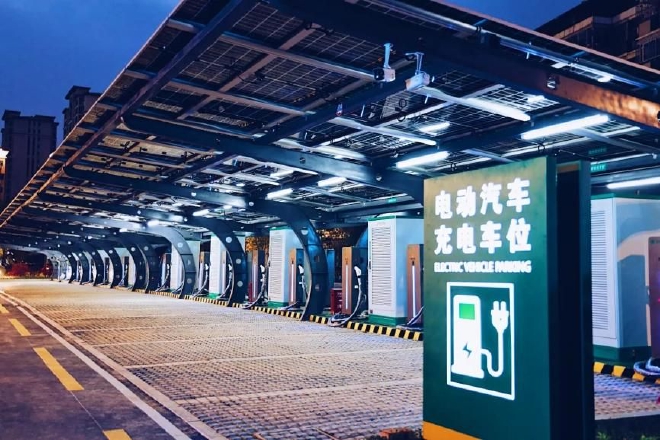
中国科学院院士、中国电动汽车百人会副理事长欧阳明高在中国电动汽车百人论坛上表示,大规模的新能源车普及带来了电动车充电难与能源产业链的转型阵痛,面向低碳化,更应该加快能源基础设施转型。
他还提到,“电动汽车补能太慢就要解决快速补电的问题,现在要逐步从快充向超充过渡,在过渡过程中间还可以继续使用快充,用两把枪来充,就是充电功率加倍,甚至三把枪充也可以。”
另外,比亚迪董事长王传福也提到用“多枪超充”模式缓解用户充电焦虑。他表示,“多枪超充模式可以更好地兼容,并且未来可扩展,同时对用户也更友好,还不用更改现有标准,只需要增加一定数量的枪头或柜子即可,这种模式可以解决各方对标准意见的不同争论。”
当下的充电桩市场,公共充电桩功率普遍较低,从而导致充电速度慢、排队时间长、周转效率低等问题,难以满足用户的充电需求。为了解决这个难题,大功率快充显得日益迫切,而大功率快充桩也正在备受推崇。
那么,当下的新能源汽车充电焦虑该如何破解?除了改变动力电池密度外,大功率超级快充和换电模式的发展前景如何?我们简要分析。
充电桩正成为全民刚需
不少车主抱怨,虽然小区装有公共充电桩,但是数量远远不够,车主排队充电现象明显,不得已只能选择几公里以外的公共充电桩。也有部分车主表示,小区内无法安装充电桩,只能在公共充电桩充电,快充也要等待一小时左右,用车体验很不好。
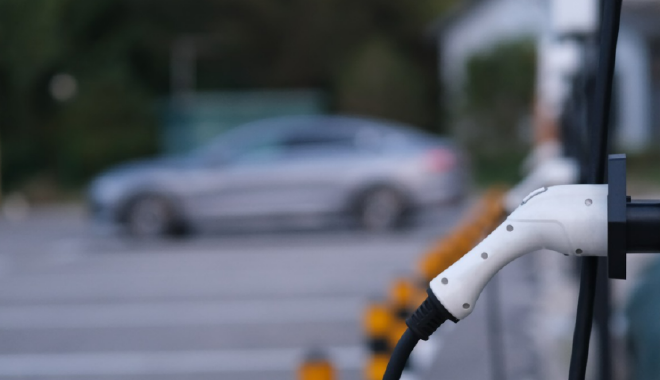
根据统计数据,2022年全国新能源汽车销售量达到687万辆,同比增长96%,新能源汽车保有量达到1310万辆,市场渗透率达到27.6%,较2021年提升12.6个百分点。
2022年,充电基础设施增量为259.3万台,同比增加99.1%。截止2022年12月,全国充电基础设施累计总量约为521万台,车桩比为2.55:1,即每2.55辆新能源车有1个充电桩可以提供服务。
其中,公共充电桩增量同比上涨91.6%;随车配建私人充电桩增量为194.2万台,同比上升225.5%。至2022年底,随车配建的充电桩保有量为341.2万台。
不过,虽然私人充电桩数量增加,但是私家车主自己家里装充电桩的比例只有36%,64%的新能源车主,必须要到公共充电站去充电。
与传统燃油车加油不同,新能源汽车充电的速度成为用户最为担忧的问题之一,所以加快充电桩基础设施建设成为全球新能源产业可持续发展的先决条件和迫切需要。
为了扶持充电桩产业,早在2019年新发布的新能源汽车补贴政策中就已经加大了对充电桩的支持力度,各省市也纷纷出台相关政策。我国从2020年3月将充电桩纳入新基建范畴,从此充电桩的发展进入一个全新阶段,充电桩的数量也在快速增长。
今年2月,工信部八部门发布通知再次力挺充电桩行业,新政策提出提高试点领域新增及更新车辆中新能源汽车比例,公交/出租/环卫等领域力争达到80%;新增公共充电桩/新能源汽车推广数量比例力争达到1:1。
在通知中给出了36个试点区域新能源推广数量参考目标,其中北京等11个区域推广目标 为10万辆,山东等11个区域推广目标为6万辆,海南等14个区域推广目标为2万辆,而对应公共充电桩数量约100万个。
可以看到,国家对充电桩的建设投入力度非常大,这对于促进新能源汽车和充电桩市场快速发展也起到积极作用。因此,充电桩在政策的刺激下有望迎来快速发展。
目前,国内车桩比为2.55:1,相较《电动汽车充电基础设施发展指南(2015-2020 年)》中2020年中国车桩比1:1的目标仍有较大差距。此次《通知》以公共领域车辆为样板再提车桩比1:1的目标,或将有效拉动充电桩市场增长。
值得关注的是,在通知中还明确指出了180kW以上充电桩折算为标准桩后乘以1.1,支持充电桩向高功率直流快充的方向发展。
在政策的刺激下,新能源汽车基础建设逐渐趋于完善,尤其是大功率充电桩被推广后,也会在一定程度上解决里程焦虑,从而带动新能源汽车渗透率进一步提高。
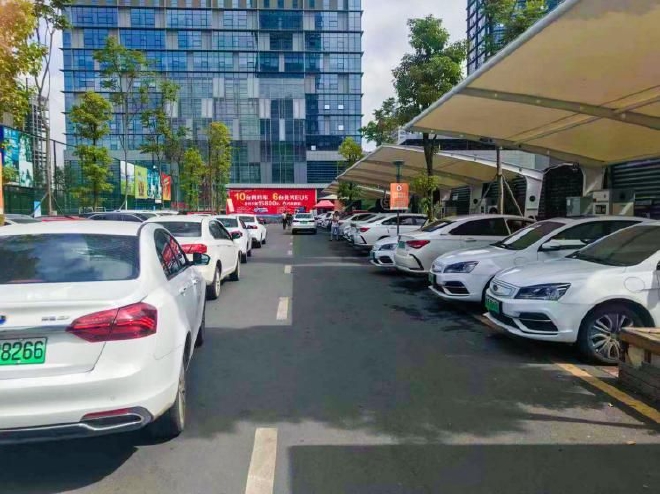
根据中国充电联盟预计,2023年我国将新增340万台随车配件充电桩,保有量达到681.2万台,同比增长80%以上。其中公共充电桩新增97.5万台,交流充电桩56.5万台,直流充电桩41万台。另外还将新增公共充电站6万座,保有量达到17.1万座。
如果按照这个速度,充电桩的增速明显高于新能源汽车的增长速度,车桩比将进一步降低,对于新能源汽车的发展起到促进作用。
从国际市场来看,新能源汽车的增速也会在最近几年迎来快速增长,随之对应的也是充电桩增速问题。据悉,为支持电动汽车增长达到承诺的目标,到2030年,全球充电基础设施需要增加12倍以上,每年需要安装超过2200万个电动轻型车辆充电桩。
2020年,欧盟也出台《交通运输体系绿色转型计划》,提出到2025年在全欧洲范围内部署大约100万个公共充电桩,并计划在2030年建成300万个公共充电桩。
所以,全球的充电桩需求正在进一步扩大,全民充电桩时代也在加速到来。不过对比中国,海外市场的充电桩缺口更大,充电桩建设迫在眉睫。以美国为例,尽管新能源汽车渗透率在不断提升,但车桩比高达17:1,亟需完善充电桩布局。
大功率高压快充路线受青睐
进入2021年,大功率高压快充路线就越来越受车企的青睐,最初是起亚、现代等国际巨头布局800V高压充电平台,随后国内车企比亚迪、长城、广汽、小鹏等也相继推出了800V平台,高压快充体验将会成为电动车市场差异化体验的重要标准。
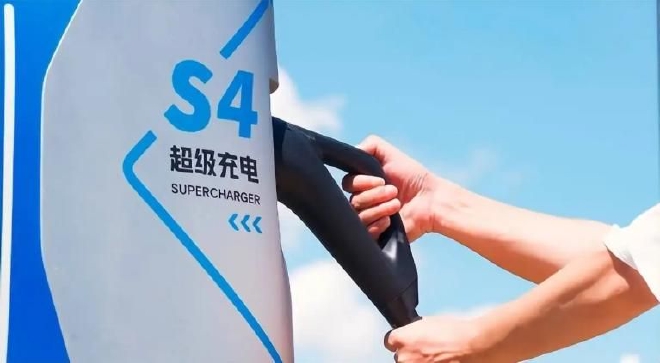
2022年小鹏推出的G9支持800V高压快速充电,该车采用了800V SiC(碳化硅)高压电驱平台,可达到95%的高效输出,综合续航里程提升5%以上,还能使得补能效率大大增加,充电5分钟续航可增加200公里。
一时间,高压快充成为市场的新宠。据机构测算,2025年,国内搭载800V高压架构的新能源汽车预计为99.9万辆,3年CAGR(复合年均增长率)达270.9%;全球搭载800V高压架构的新能源汽车预计达215.3万辆,3年CAGR达189.2%。
从用户在公共充电桩补能的选择行为来看,87.9%的用户充电时偏好选择120kW及以上的大功率充电设施,而60kW以下充电设施的用户选择率仅为1.6%。其中,选择120kW-150kW大功率充电设施的用户数量最多,占比达35.1%。
这也就说明,补能速度已经成为制约新能源汽车发展的瓶颈,车主在选择充电桩时更倾向于高压快充,毕竟充电时也要考虑充电时间、停车收费的因素,而大功率充电设备更符合用户的使用偏好。
目前,新能源汽车在电池技术上的突破主要分为两种路线,一是长续航,二是高压快充技术。如今长续航已经实现,而充电配套设施数量跟不上,就只能靠压缩充电时间来解决。
不过,受限于硅基IGBT功率元器件的耐压能力,如今电动汽车充电系统普遍采用400V电压快充,如果想要充电提速,只能提高充电功率,所以800V高压充电开始受热捧。
提高充电功率有两种选择,一是选择提高电压,二是提高电流。如果选择提高电流,就需要更粗的输电导线,电流过高会导致充电枪、线缆及动力电池核心部件等产生大量热损失,在传输中发热产生的损耗也就越高,显然不是最理想的选择。
所以,选择提高电压成为最优选项,将电压平台从400V提升到800V甚至更高的水平,来实现高压系统的扩容,实现350kW以上的快充。当电流不变,充电功率就会随着系统电压翻倍,充电时间大大缩短,这也是800V高压超充提升充电效率的原理。
值得关注的是,如果充电功率相同,800V高压超充架构下的高压线束更小,成本相应降低,电能损耗也会相应减少,热管理的难度相对也低一些,整体电池成本更优。
相比之下,提升电压这一技术路线,不仅可以实现充电速率提升的目的,还可降低热损耗、减轻整车质量、优化动力结构、提高安全性能。
从不同的实践来看,高压快充能够在更宽范围内实现最大功率充电,更能匹配未来快充需求,同时也解决了充电等待焦虑,运行效率更高,从而提升了续航里程。
行业从业者也认为,与加大电池容量,大幅增加电动车成本和重量的方式相比,高压快充不但可以解决充电慢和里程焦虑,还可以降低整车成本。另外,在高压大功率充电基础设施可以匹配的前提下,充电5分钟续航500公里,就可满足用户快速补能需求。
于是业界也达成了共识,高压快充能够有效解决电动车里程焦虑、快速充电问题,已成为未来补能技术演进新趋势,相应的800V高电压平台车型及高压大功率超充网络正处于加速布局阶段。
除了小鹏G9(配置|询价)外,理想汽车曾在理想L8(配置|询价)发布会上表示:“在过去几年,我们在积极地布局纯电平台,理想汽车的纯电动车型将全部采用800V高压平台。”还有长城汽车机甲龙也采用800V充电技术,充电15分钟可续航545公里。
公开资料显示,目前全球已推出或确定推出800V系统的汽车品牌多达20多家。不过众多车企布局800V高压快充并不意味着该技术已经得到了普及,只是在很小的范围内试运行,而且大多数聚焦在高端车型上。
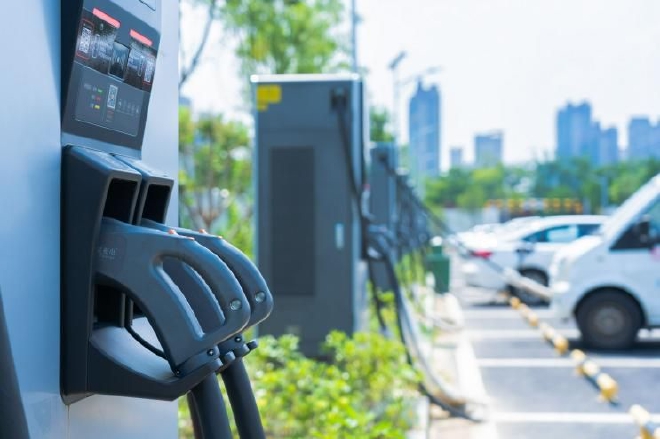
业内人士表示,目前800V充电技术面临几大难点:一是由于电压提升所带来的耐压以及绝缘设计等问题,SiC技术带来的高频斩波问题;二是电池技术,快充对电池安全和寿命提出了挑战;三是充电管理,电池状态在快充过程中的动态变化及其管理问题。
另外,大功率高压快充的成本较高。理想汽车创始人李想曾表示,建设3000座超级充电站的花费大约是100亿元,平均下来每一个超充站的建设成本超过300万元。
此前特斯拉方面也表示,如果将特斯拉Model 3和Model Y(配置|询价)等小型车充电方式切换到800V充电,充电成本过高。这种充电方式更适合大型车辆,比如特斯拉Cybertruck皮卡和Semi Class 8卡车最终可能会使用800V电压。
从目前的发展来看,大功率快充会成为一种趋势,不过需要时间来验证,目前高压快充的成本较高,产业端需要一个好的商业模式来进行成本平衡。对于车企来说,布局大功率快充前瞻技术规划和落地十分有必要。
换电也是缓解等待焦虑方式之一
事实上,除了布局大功率快充桩外,换电也成为当下缓解新能源汽车补能焦虑的一种方式。自2021年以来,换电模式就引发了各界的广泛关注,这背后既有政策的推动,也有相关企业对换电业务的不断加码。
2021年4月,我国发布了《电动汽车换电安全要求》,填补了汽车行业的标准空白,解决了换电模式无标准可依的紧迫问题。随后工信部又印发《关于启动新能源汽车换电模式应用试点工作的通知》,决定启动新能源汽车换电模式应用试点工作。
在政策的大力支持下,新能车换电模式也开始引来更多关注。鉴于当下大功率快充桩还不能大面积普及,而换电模式在用车效率、补能时间、延长电池寿命,以及维护和管理便利性、降低电网负荷等方便具有明显优势。
一直坚持换电布局的蔚来汽车,在3月28日迎来了第一批三代换电站同步上线。截至2023年3月15日,蔚来已在全国布局1322座换电站,总换电次数超过了1900万次,蔚来车主充电、换电比例几乎达到1:1。2023年,蔚来还将新增1000座换电站。
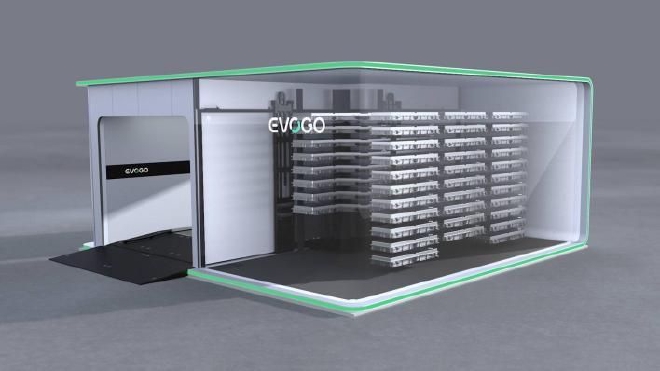
最近,宁德时代也发布公告称,巧克力换电块已实现批量生产,将以该方案推广换电模式。据了解,宁德时代的巧克力换电块号称一分钟就可以更换一个电池块,电池可以分开更换,每块电池能够提供200公里续航。
当然,换电普及也存在不少问题。全球新能源车企非常多,如果没有统一的标准,那么电池的类型、接口太多,生产各种不同的电池,成本就会比较高,不利于普及。
所以,制定统一的换电标准,需要宁德时代、比亚迪等头部企业出面领头,也需要车企的通力合作才能实现,只有电池企业与电动汽车企业相辅相成,才能促进换电模式快速普及。
未来汽车补能采用换电还是充电一直都是热议的话题,事实上,无论是快充还是换电,其最终目的都是为了给用户带来更便捷的服务,以此来消除补能焦虑。
不过,两种补能方式仍然存在不少局限性,目前超级快充对电池要求较高,就比如小鹏的S4超充技术,只有顶配小鹏G9才能支持,而充电站的功率有限,如果车辆较多,势必会降低功率,增加充电时长,这也是需要解决的问题。
虽然目前换电服务和体验方面得到认可,但是不同品牌车型不能互通也给企业的盈利带来较大挑战,随着旧电池数量的增加,成本压力也会更高。
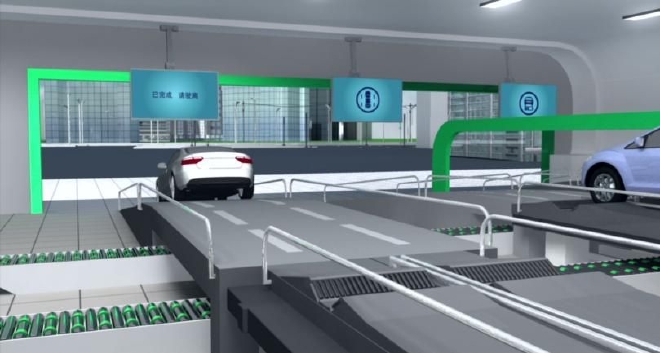
此前,乘联会秘书长崔东树就曾表示,私家车可能不是推广换电的最佳起点。根据他的测算,一座换电站服务至少要服务340辆左右的车才达到盈亏平衡点,如果只是私家车用户使用,盈利时间方面会拉长。
当然,他也指出,换电模式在部分场景有很好的优势,但私家市场短期难以有效发展,长期还要看超级充电技术的突破。
小结:事实上,追求充电和加油一样快,一直是新能源业内的目标之一。大功率充电桩的出现,意味着电动车和油车在使用体验上的差距进一步缩小。在业内看来,家用充电桩、超级快充桩和换电站会是未来电动汽车补能的三大方式,但不论是换电还是充电,都需要大规模布局,才能让纯电动汽车拥有像燃油车加油一样的快捷体验。
High power fast charging, can alleviate the anxiety of charging new energy vehicles?
In recent years, the development of new energy vehicles has been very rapid, but there have also been many accompanying problems, among which "charging anxiety" is particularly prominent. Long charging time and lack of charging posts are the problems that car owners complain about most. Therefore, as a necessary supporting product for new energy vehicles, the importance of charging piles is self-evident. Alleviating Anxiety in Charging New Energy Vehicles: High Power Fast Charging Becomes a New Favorite
Ouyang Minggao, an academician of the CAS Member and vice chairman of the China Electric Vehicle Hundred Talents Association, said at the China Electric Vehicle Hundred Talents Forum that the large-scale popularization of new energy vehicles has brought difficulties in charging electric vehicles and pains in the transformation of the energy industry chain. Facing low-carbon, we should accelerate the transformation of energy infrastructure.
He also mentioned, "If the charging of electric vehicles is too slow, the problem of fast charging needs to be solved. Now, we need to gradually transition from fast charging to overcharging. During the transition process, we can continue to use fast charging, using two guns to charge, which doubles the charging power, or even three guns to charge
In addition, BYD Chairman Wang Chuanfu also mentioned using the "multi gun overcharging" mode to alleviate user charging anxiety. He said, "The multi gun overcharge mode can be better compatible and scalable in the future, while also being more user-friendly. There is no need to change existing standards, just add a certain number of gun heads or cabinets. This mode can solve different disputes on standards among all parties
In the current charging pile market, the power of public charging piles is generally low, which leads to problems such as slow charging speed, long queuing time, and low turnover efficiency, making it difficult to meet the charging needs of users. In order to solve this problem, high-power fast charging is becoming increasingly urgent, and high-power fast charging piles are also being highly respected.
So, how can we solve the current anxiety about charging new energy vehicles? Besides changing the density of power batteries, what are the development prospects of high-power ultra fast charging and battery swapping modes? Let's briefly analyze.
Charging stations are becoming a necessity for the entire population
Many car owners complain that although there are public charging stations installed in the community, the number is far from enough. The phenomenon of car owners queuing for charging is obvious, and they can only choose public charging stations a few kilometers away as a last resort. Some car owners also stated that charging stations cannot be installed in the community and can only be charged from public charging stations. Fast charging also requires waiting for about an hour, which makes the driving experience very poor.
Alleviating Anxiety in Charging New Energy Vehicles: High Power Fast Charging Becomes a New Favorite
According to statistical data, in 2022, the sales volume of new energy vehicles in China will reach 6.87 million, a year-on-year increase of 96%, the number of new energy vehicles will reach 13.1 million, and the market penetration rate will reach 27.6%, 12.6 percentage points higher than that in 2021.
In 2022, the increase in charging infrastructure was 2.593 million units, an increase of 99.1% year-on-year. As of December 2022, the total cumulative amount of charging infrastructure in China is about 5.21 million units, with a vehicle to pile ratio of 2.55:1, which means that every 2.55 new energy vehicles have one charging pile that can provide services.
Among them, the increment of public charging stations increased by 91.6% year-on-year; The increment of private charging stations built along with the vehicle was 1.942 million, a year-on-year increase of 225.5%. By the end of 2022, the total number of charging stations built with vehicles is 3.412 million.
However, although the number of private charging stations has increased, the proportion of private car owners installing charging stations at home is only 36%, and 64% of new energy car owners must go to public charging stations to charge.
Different from traditional fuel vehicles, the charging speed of new energy vehicles has become one of the most worrying problems for users, so accelerating the construction of charging pile foundation has become a prerequisite and urgent need for the sustainable development of the global new energy industry.
In order to support the charging pile industry, as early as the newly released subsidy policy for new energy vehicles in 2019, support for charging piles has been increased, and various provinces and cities have also introduced relevant policies. Since March 2020, China has included charging stations in the new infrastructure category, marking a new stage in the development of charging stations. The number of charging stations is also rapidly increasing.
In February of this year, eight departments of the Ministry of Industry and Information Technology issued a notice to once again support the charging pile industry. The new policy proposes to increase the proportion of new energy vehicles in newly added and updated vehicles in pilot areas, and strive to reach 80% in areas such as public transportation, taxi, and environmental sanitation; Strive to achieve a 1:1 ratio in the promotion of new public charging stations/new energy vehicles.
The notice provides reference targets for the promotion of new energy in 36 pilot regions, including 100000 vehicles in 11 regions such as Beijing, 60000 vehicles in 11 regions such as Shandong, and 20000 vehicles in 14 regions such as Hainan, corresponding to approximately 1 million public charging stations.
It can be seen that the country has invested heavily in the construction of charging piles, which has also played a positive role in promoting the rapid development of the new energy vehicle and charging pile market. Therefore, under the stimulation of policies, charging stations are expected to experience rapid development.
At present, the vehicle to pile ratio in China is 2.55:1, which is still a significant gap compared to the 2020 target of 1:1 vehicle to pile ratio in the "Guidelines for the Development of Electric Vehicle Charging Infrastructure (2015-2020)". This notice aims to use public sector vehicles as a model to increase the ratio of charging piles by 1:1, which may effectively drive the growth of the charging pile market.
It is worth noting that the notice also clearly states that charging piles above 180kW can be converted into standard piles and multiplied by 1.1, supporting the development of charging piles towards high-power DC fast charging.
Under the stimulation of policies, the infrastructure construction of new energy vehicles is gradually improving, especially after the promotion of high-power charging piles, which will also to some extent solve mileage anxiety and further increase the penetration rate of new energy vehicles.
Alleviating Anxiety in Charging New Energy Vehicles: High Power Fast Charging Becomes a New Favorite
According to the China Charging Alliance, in 2023, China will add 3.4 million on-board accessory charging stations, with a total ownership of 6.812 million units, a year-on-year increase of over 80%. Among them, 975000 new public charging stations, 565000 AC charging stations, and 410000 DC charging stations have been added. In addition, 60000 new public charging stations will be added, with a total occupancy of 171000.
If the growth rate of charging piles is significantly higher than that of new energy vehicles at this speed, the vehicle to pile ratio will further decrease, which will promote the development of new energy vehicles.
From the perspective of the international market, the growth rate of new energy vehicles will also experience rapid growth in recent years, corresponding to the problem of charging pile growth. It is reported that in order to support the growth of electric vehicles and achieve the promised goals, the global charging infrastructure needs to increase by more than 12 times by 2030, and more than 22 million electric light vehicle charging stations need to be installed annually.
In 2020, the European Union also introduced the "Green Transformation Plan for the Transportation System", proposing to deploy approximately 1 million public charging stations throughout Europe by 2025, and plans to build 3 million public charging stations by 2030.
So, the global demand for charging stations is further expanding, and the era of universal charging stations is also accelerating. However, compared to China, the gap in charging piles in overseas markets is even greater, and the construction of charging piles is urgent. Taking the United States as an example, although the penetration rate of new energy vehicles is constantly increasing, the vehicle to pile ratio is as high as 17:1, and there is an urgent need to improve the layout of charging piles.
High power, high voltage, and fast charging routes are favored
In 2021, high-power high-voltage fast charging routes are increasingly favored by car companies. Initially, international giants such as Kia and Hyundai laid out 800V high-voltage charging platforms. Subsequently, domestic car companies such as BYD, Great Wall, GAC, and Xiaopeng have also launched 800V platforms. The high-voltage fast charging experience will become an important standard for differentiated experiences in the electric vehicle market.
Alleviating Anxiety in Charging New Energy Vehicles: High Power Fast Charging Becomes a New Favorite
The G9 launched by Xiaopeng in 2022 supports 800V high-voltage fast charging. The car adopts an 800V SiC (silicon carbide) high-voltage electric drive platform, which can achieve 95% efficient output, increase the comprehensive range by more than 5%, and greatly increase energy replenishment efficiency. The 5-minute charging range can increase by 200 kilometers.
For a while, high-voltage fast charging became a new favorite in the market. According to institutional calculations, the number of new energy vehicles equipped with 800V high-voltage architecture in China is expected to be 999000 in 2025, with a CAGR (compound annual growth rate) of 270.9% over the next three years; The number of new energy vehicles equipped with 800V high-voltage architecture worldwide is expected to reach 2.153 million, with a CAGR of 189.2% in three years.
From the perspective of user selection behavior in public charging stations, 87.9% of users prefer to choose high-power charging facilities of 120kW and above when charging, while the selection rate of users with charging facilities below 60kW is only 1.6%. Among them, the number of users who choose 120kW-150kW high-power charging facilities is the highest, accounting for 35.1%.
This also indicates that the speed of energy replenishment has become a bottleneck restricting the development of new energy vehicles. Car owners tend to prefer high-voltage fast charging when choosing charging stations, after all, charging time and parking fees should also be considered, and high-power charging devices are more in line with user preferences.
At present, the breakthroughs in battery technology for new energy vehicles are mainly divided into two routes: long range and high-voltage fast charging technology. Nowadays, long range has been achieved, but the number of charging supporting facilities cannot keep up, so it can only be solved by compressing charging time.
However, limited by the withstand voltage capability of silicon based IGBT power components, electric vehicle charging systems now generally use 400V voltage for fast charging. If you want to charge faster, you can only increase the charging power, so 800V high-voltage charging has become popular.
There are two options for increasing charging power, one is to increase the voltage, and the other is to increase the current. If you choose to increase the current, you need thicker transmission wires. Excessive current can cause significant heat loss to the charging gun, cables, and core components of the power battery, resulting in higher losses caused by heating during transmission. Obviously, this is not the most ideal choice.
So, choosing to increase the voltage becomes the optimal option, increasing the voltage platform from 400V to 800V or even higher, to achieve the expansion of the high-voltage system and achieve fast charging above 350kW. When the current remains constant, the charging power will double with the system voltage, greatly reducing the charging time. This is also the principle of 800V high-voltage overcharging to improve charging efficiency.
It is worth noting that if the charging power is the same, the high-voltage wiring harness under the 800V high-voltage overcharge architecture will be smaller, the cost will be correspondingly reduced, the power loss will also be correspondingly reduced, the difficulty of thermal management will be relatively lower, and the overall battery cost will be better.
In contrast, the technical route of increasing voltage can not only achieve the goal of increasing charging rate, but also reduce heat loss, reduce vehicle mass, optimize power structure, and improve safety performance.
From different practices, high-voltage fast charging can achieve maximum power charging within a wider range, better match future fast charging needs, and also solve charging waiting anxiety, resulting in higher operating efficiency and improved range.
Industry practitioners also believe that compared to increasing battery capacity and significantly increasing the cost and weight of electric vehicles, high-voltage fast charging can not only solve slow charging and mileage anxiety, but also reduce vehicle costs. In addition, on the premise that the high-voltage high-power charging infrastructure can be matched, the 5-minute charging range of 500 kilometers can meet users' rapid energy replenishment needs.
So the industry also reached a consensus that high-voltage fast charging can effectively solve the problem of electric vehicle mileage anxiety and fast charging, which has become a new trend in the evolution of future energy replenishment technology. The corresponding 800V high-voltage platform models and high-voltage high-power overcharging networks are in the accelerated layout stage.
In addition to Xiaopeng G9 (configuration | inquiry), Ideal Car once said at the Ideal L8 (configuration | inquiry) press conference: "In the past few years, we have actively deployed the pure electric platform, and all the pure electric vehicles of Ideal Car will use the 800V high-voltage platform." Great Wall Motor Jialong also uses the 800V charging technology, which can last 545 kilometers after 15 minutes of charging.
According to public information, there are currently over 20 car brands worldwide that have launched or are determined to launch 800V systems. However, the fact that many car companies have deployed 800V high-voltage fast charging does not mean that the technology has been popularized, it has only been tested on a small scale, and most of it is focused on high-end models.
Alleviating Anxiety in Charging New Energy Vehicles: High Power Fast Charging Becomes a New Favorite
Industry insiders have stated that 800V charging technology currently faces several major challenges: firstly, due to voltage rise, voltage resistance and insulation design issues, as well as high-frequency chopping issues caused by SiC technology; The second is battery technology, which poses challenges to battery safety and lifespan due to fast charging; The third is charging management, which involves the dynamic changes in battery status during the fast charging process and their management issues.
In addition, the cost of high-power high-voltage fast charging is relatively high. Li Xiang, the founder of Ideal Automobile, once stated that the cost of building 3000 super charging stations is approximately 10 billion yuan, with an average construction cost of over 3 million yuan per super charging station.
Previously, Tesla also stated that if the charging methods of small cars such as Tesla Model 3 and Model Y (configuration | inquiry) were switched to 800V charging, the charging cost would be too high. This charging method is more suitable for large vehicles, such as Tesla Cybertruck pickup trucks and SemiClass 8 trucks, which may eventually use 800V voltage.
From the current development perspective, high-power fast charging will become a trend, but it will take time to verify. Currently, the cost of high-voltage fast charging is high, and the industry needs a good business model to balance costs. For car companies, it is necessary to plan and implement high-power fast charging forward-looking technology.
Changing the battery is also one of the ways to alleviate waiting anxiety
In fact, in addition to laying out high-power fast charging piles, battery swapping has also become a way to alleviate the anxiety of new energy vehicle energy replenishment at present. Since 2021, the electricity exchange model has attracted widespread attention from all sectors, which is driven by policies and the continuous increase in electricity exchange business by relevant enterprises.
In April 2021, China released the "Safety Requirements for Electric Vehicle Battery Exchange", filling the standard gap in the automotive industry and addressing the urgent issue of no standard for battery exchange modes. Subsequently, the Ministry of Industry and Information Technology issued a notice on launching the pilot work of new energy vehicle battery swapping mode application, deciding to launch the pilot work of new energy vehicle battery swapping mode application.
With strong policy support, the new energy vehicle battery swapping mode has also begun to attract more attention. Given that high-power fast charging piles cannot be widely popularized at present, the power exchange mode has obvious advantages in terms of vehicle efficiency, energy replenishment time, extended battery life, maintenance and management convenience, and reduced power grid load.
NIO Motors, which has always adhered to the layout of battery swapping, welcomed the first batch of third-generation power stations to be launched simultaneously on March 28th. As of March 15, 2023, NIO has deployed 1322 power exchange stations nationwide, with a total of over 19 million power exchanges. The charging and exchange ratio of NIO car owners has almost reached 1:1. In 2023, NIO will also add 1000 replacement power stations.
Alleviating Anxiety in Charging New Energy Vehicles: High Power Fast Charging Becomes a New Favorite
Recently, Ningde Times also announced that chocolate battery swapping blocks have been mass-produced and will promote the battery swapping mode with this plan. It is understood that the chocolate battery pack from Ningde Times claims to be able to replace one battery pack in just one minute. The batteries can be replaced separately, and each battery pack can provide a range of 200 kilometers.

